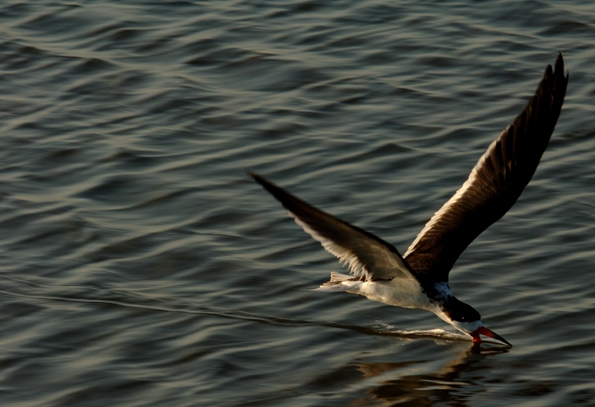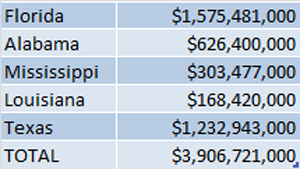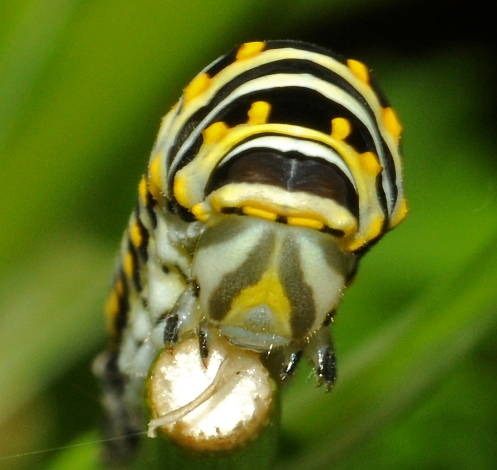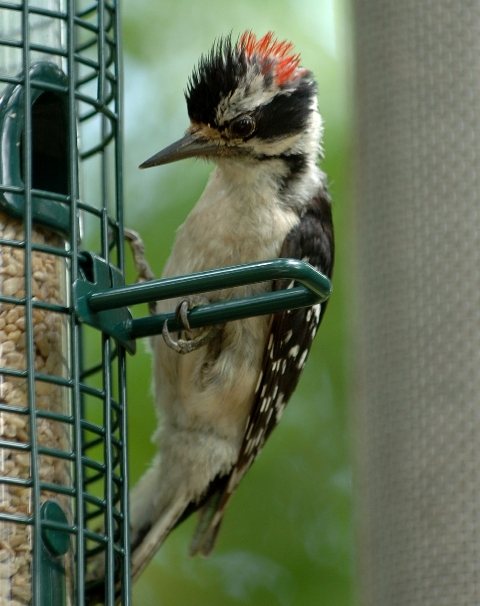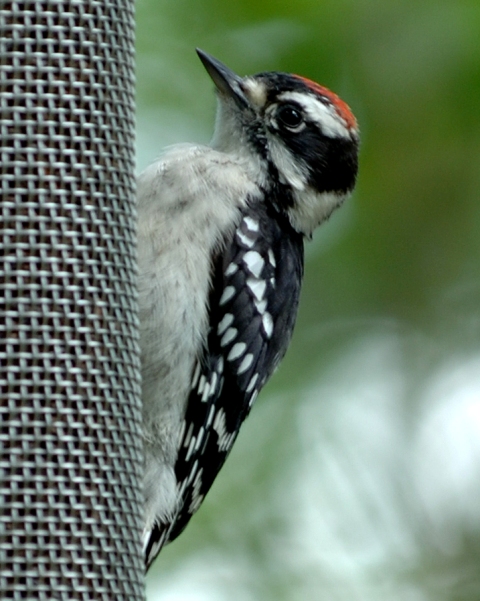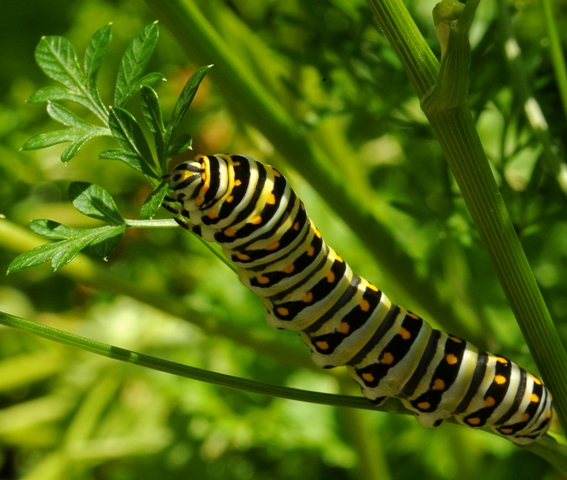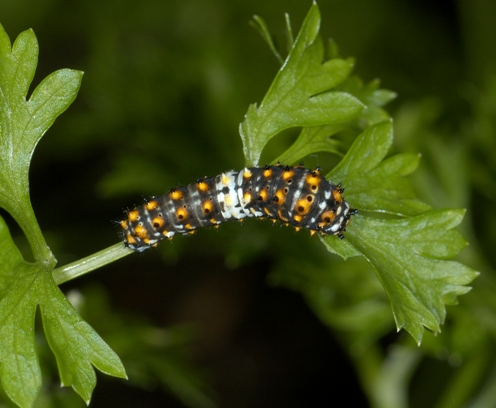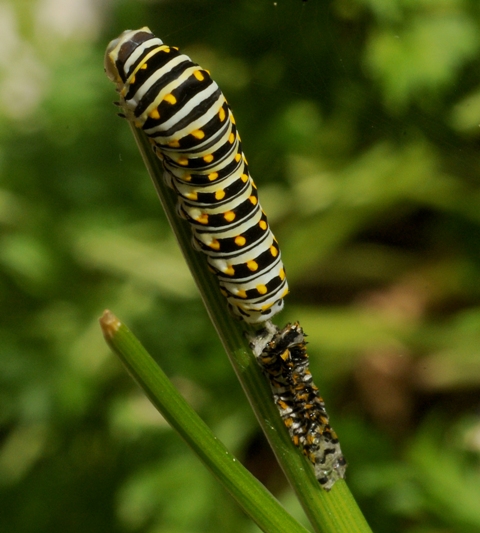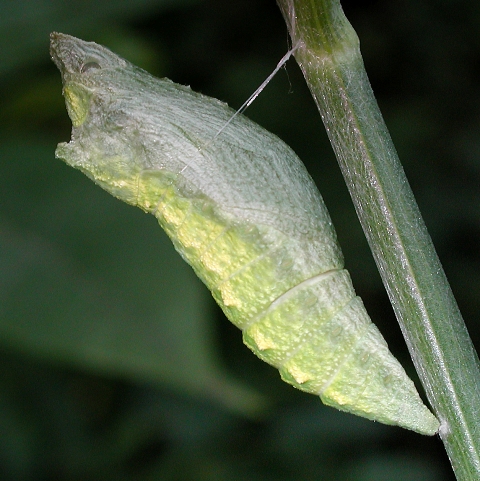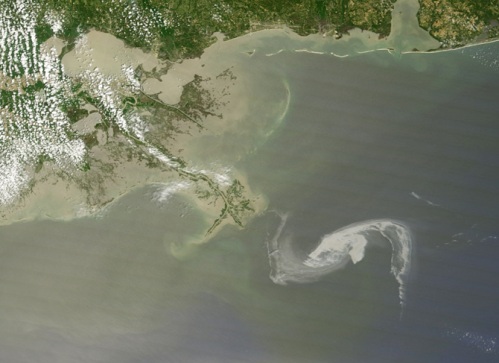The first decade of the millennium is past. How will those ten years be remembered? WW II is the 1940s, the cultural revolution is the 1960s, a roaring economy is the 1920s. How will we label the 2010s?
For many 9/11 will be the moment that brands the decade. Perhaps the wars in the Middle East will give 9/11 a run for its money, although all of these events bleed together, literally. For many, though, I suspect that the decade is the period when we were all greened.
This nation (and world) has passed through conservation eras before. The late 1890s and early 1900s were Roosevelt years. In nine short years Theodore Roosevelt (with help from Pinchot, Garfield, and Lacy) set aside over 230 million acres and established the standard for the world (I should mention, though, that Grant preserved Yellowstone, creating the world’s first national park). The early 1970s brought the environmental years, with Rachel Carson’s Silent Spring spurring the movement to clean our air and water. We often forget that it was President Nixon who brought about the Clear Water Act, Clean Air Act, the Endangered Species Act, and NEPA.
How ironic that the two most momentous periods in Amiercan conservation and environmental history were guided by Republican presidents. Times do change.
In most cases these eras can be tied to a single or series of catalyzing events. The 1929 Wall Street collapse, Pearl Harbor, the Selma march, the Tet offensive, and 9/11 were prelude to immense social and political change. In the case of 9/11, we are still in the midst of that shift.
Conservationists and environmentalists have similar cataclysmic events to point to. The Cuyahoga River Fire in 1969, Love Canal, the first Earth Day, and Three Mile Island all led to significant changes in public perception and policy. I still remember W. Eugene Smith’s vivid images in Life Magazine showing the effects of mercury poisoning in Minamata, Japan. Humans often need a dramatic event to crystallize the issues that are otherwise amorphous and poorly defined. The current lack of public concern about global climate change is a perfect example. Perhaps when Manhattan or Miami goes under the public will finally take note.
By “greened” I am referring to the popularization of environmental concerns. “Green” is a marketing term, a way of branding a product or act. A brand may well be a promise, but that promise is not always kept. In this past decade PR, marketing, and company flacks convinced the county (and the world) that a new age of sustainability had arrived. And, as with so much of marketing, no one actually took the time to look beyond these promises to see actual proof. Remember, in the green decade British Petroleum morphed into Beyond Petroleum. Now we see the proof that belies that claim in the Gulf of Mexico.
Let’s look past the hype and to the numbers. According to a recent article in New Scientist “the average fuel efficiency of the US vehicle fleet has risen by just 3 miles per gallon since the days of the Ford Model T, and has barely shifted at all since 1991.”
These are the conclusions reached by Michael Sivak and Omer Tsimhoni at the University of Michigan Transportation Research Institute in Ann Arbor. They analysed the fuel efficiency of the entire US vehicle fleet of cars, motorcycles, trucks and buses from 1923 to 2006. Progress has stalled since then, though, despite growing environmental concerns. From 1991 to 2006 the average efficiency improved by only 1.8 per cent to 17.2 mpg (7.31 km/l).
The average size of a North American suburban home in 1950 was 800 sq ft, in 1970 it was 1500 sq ft, and in 2000 it was 2266 sq ft. According to the US Census Bureau, the average size of a US home as of 2006 is 2,469 square feet. In the same period, the average household size (number of people) dropped from 3.54 to around 2.5. Houses grow larger, and families grow smaller. Here is another scrap to remember – since at least 2005, there have been more TVs per household on average than people per household. I guess we need the TV’s to fill that extra space.
Surely public involvement in environmental issues is an area that showed an increase during the green decade? Here are the numbers.
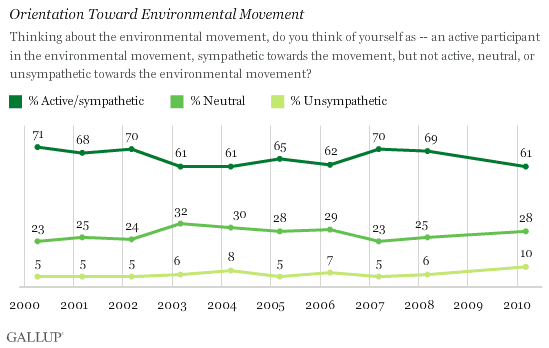
The latest Gallup survey shows a decline in the percentage of people who are active in or sympathetic toward the environmental movement, and a doubling of those who are unsympathetic. Yes, environmental supporters still outnumber opponents by a wide margin, but wouldn’t we have expected growth in the age of green?
Even more dramatic is the decrease in the percentage of the American public that believes that the environmental movement is doing more harm than good.
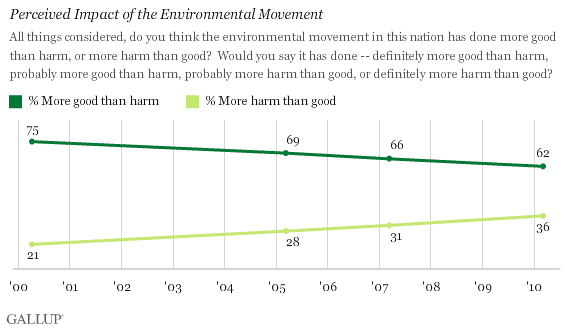
We rail about the oil industry, yet refuse to take the steps necessary to dramatically raise the average fleet mileage (and a CAFE standard of 34.1 by 2016 is hardly dramatic). We have smaller families to feed yet larger houses to heat, cool, and decorate. We buy green, yet act gray. What gives?
Let’s begin with awareness. Just how aware are Americans about the details of our environmental challenges? Young adults today are among the first to have taken environmental education classes (they were certainly absent when I attended school). We now have environmental learning centers, environmental educators, environmental tv channels, environmental cartoon shows, and environmental organizations constantly pushing environmental education. Shouldn’t we see a higher level of environmental knowledge and literacy than in the past?
But for most Americans, it [environmental literacy] falls far short. Most people accumulate a diverse and unconnected smattering of factoids, a few (sometimes incorrect) principles, numerous opinions, and very little real understanding. Research shows that most Americans believe they know more about the environment than they actually do. For example, 45 million Americans think the ocean is a source of fresh water; 120 million think spray cans still have CFCs in them even though CFCs were banned in 1978; another 120 million people think disposable diapers are the leading problem with landfills when they actually represent about 1% of the problem; and 130 million believe that hydropower is America’s top energy source, when it accounts for just 10% of the total. It is also why very few people understand the leading causes of air and water pollution or how they should be addressed…NEETF, Roper
If Americans struggle with the details, green marketers are more than willing to gloss over the facts for them. According to the American Marketing Association, green marketing is the marketing of products that are presumed to be environmentally safe. But what do they mean by presumed? What is safe? Who is sitting in judgment about what is or is not “green?” The auto industry gave Americans SUVs and Hummers splashing through wetlands on your television set while killing the electric car. The same industry has opposed meaningful CAFE standards since first considered. Exxon may donate to an environmental group, but then gives millions to global warming deniers. Check this for more information about greenwashing, and this older (but still germane) article about green marketing.
This is not to say that green marketing, PR, and communications can’t contribute. I will argue that given the American public’s penchant to buy what is being hawked, green marketing and communications could be a powerful voice and force for good. But to be such a force for good, marketers will need to be accurate, honest, and transparent. In other words, don’t use BP as the model for honest green PR.
Being greened, though, involves more than outside forces (the industries and their marketers). More importantly, we, the public, must be complicit for greenwashing to work. We have to suspend common sense and buy into the shtick.
Americans have been led to believe (and are willing to follow) that change can happen without sacrifice. To even mention sacrifice in American politics is certain death. We do not mention raising taxes (we fight our wars on credit), we do not talk about dramatic changes in transportation systems (we offer virtually meaningless mileage standards), and we want to keep our automobile culture without sacrificing clean beaches and safe seafood. We want all for nothing.
Here is an analogy. Drug consumption in the U.S. is well on its way to destroying a neighboring country – Mexico. Without our consumption, there is no drug war. Gas consumption in this U.S. works the same way, and its reach is global. The oil spilling onto our Gulf beaches is like cocaine washing ashore in Florida.
In this confusing, conflictive time, Americans are looking to their leaders for guidance. In the past, we have found answers from our clergy, elected officials, and the press. Now the clergy is either muted by scandal, or is itself politicized by social campaigners that link abortion, gay marriage, and the environment. The traditional press, the 4th Estate, is in economic meltdown, and environmental writers are an endangered species themselves. Want proof? After a 14-year run, Columbia has suspended its environmental journalism program. Congress has always been relatively easy to influence, but with increased campaign spending access is becoming even easier to buy. If you doubt this, just check campaign donations from the oil industry.
Who is left? What about advocacy groups, the nonprofits that campaign for social change? Remember that perfect storm? The green groups, I fear, have contributed to this blow up as well.
In the 1970’s groups such as the Sierra Club were instrumental in forcing the environmental legislation that shifted both American policy and perception. Losing their tax exempt status in those early skirmishes, the Sierra Club continues today with a concerted political effort. However, most environmental and conservation groups now steer clear of advocacy. In part this is due to their 501 (c) 3 IRS status which restricts political activity. But even in areas where they are able to act most have chosen not to. Why?
Perhaps in part this failure to act is because the environmental movement has calcified, and become unable to march to the front. I suspect in part it is due to an honest desire to avoid confrontation, to be “good citizens.” I also believe that in part the green groups quickly embrace those initiatives that are conflict free, and avoid those that may entail blood on the carpets. Notice how many green groups have rushed to the Last Child in the Woods campaign, a feel-warm-all-over effort if ever there was one. Of course we want our kids and grandkids to grow up with an appreciation for nature and the outdoors. But, honestly, will issues such as the Deepwater Horizon gulf gusher wait for 4th graders to be able to vote? And, more importantly, is there any proof that this environmental education effort will be any more effective than those of the past?
In the U.S. there are over 1 million 501 (c) 3 charity organizations, one for every 300 American men, women, and children. Between 1998 and 2008 the number of these organizations grew by over 64%. Of course not all are conservation groups (many are churches and religious groups), but the growth is remarkable nevertheless. In the environmental world, nonadvocacy organizations such as land conservancies and land trusts have enjoyed spectacular growth as well. We now have more and more groups competing for what is generally a same-sized pie. To survive, many have chosen to focus on local land and planning initiatives, and avoid politics. Even international groups such as The Nature Conservancy prefer to stand back from political advocacy. As a result we have more green groups and fewer green acolytes.
Of course all of these groups are desperate for funding, and many of the extractive industries (oil and gas, timber, mining) have responded by filling some of the gap. BP has donated millions to The Nature Conservancy, and ConocoPhillips has supported Audubon and conservation efforts around the country. Perhaps they are simply being good corporate citizens. But in an essay published in the Wall Street Journal, the influential neoconservative Irving Kristol counseled that “corporate philanthropy should not be, and cannot be, disinterested,” but should serve as a means “to shape or reshape the climate of public opinion.”
Most of the groups will deny (testily, I might add) any link between the money they receive and the purity (as one recently put it) of the mission. Perhaps. But an exchange between a donor and a recipient involves at least an implied quid pro quo. The company donates money, and receives, in turn, at least the good will and good name of the recipient. And, of course, those “good names” have been more than helpful in greening the American public.
Edward Abbey said, “the idea of wilderness needs no defense, it only needs defenders.” At no time in my life has this been more true. The Gulf gusher shows that no matter how much land you conserve, you can never buy enough. If you could buy enough, you can never adequately protect it from the outside world. Isolationism does not work in international policy or conservation. The defenders of nature must be advocates, engaged in a political system that makes decisions daily (such as whether or not to exempt a proposed well from an EIS) that directly impact the resources we strive to protect.
As Zaradic, Pergams, and Kareiva recently noted, “Ultimately, the fate of biodiversity and intact ecosystems may depend less on rates of habitat loss or invasive species, than on public perception of whether conservation should be supported at all.” In order to stem this tide of change, the green groups will need to slip outside of their skins and embrace their neighbors rather than just their fellow members and donors.
Abraham Lincoln said that “public sentiment is everything. With public sentiment, nothing can fail; without it nothing can succeed.” The environmental movement must reenlist the public, and invite both their involvement and their sentiment. Perhaps the existing structures should be altered. Shellenberger and Nordhaus, in The Death of Environmentalism, argued that “above all else, we need to take a hard look at the institutions the movement has built over the last 30 years. Are existing environmental institutions up to the task of imagining the post-global warming world? Or do we now need a set of new institutions founded around a more expansive vision and set of values?”
Whatever is needed, the change will be forced from the outside rather than come from inside the current structure. Can the Tea Party be the only current movement that understands the power of grassroots activism? Shellenberger and Nordhaus believe that “we need to take an urgent step backwards before we can take two steps forward.” If this step backwards is one returning the movement to the basic concepts of public engagement and grassroots organizing, then I agree. Absent strong political (particularly presidential) leadership, there is no other choice.
Ted Eubanks
Austin and Galveston, Texas
14 June 2010
